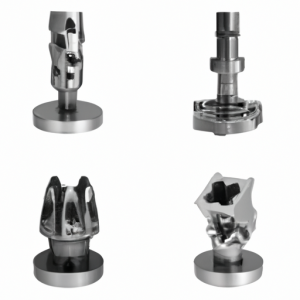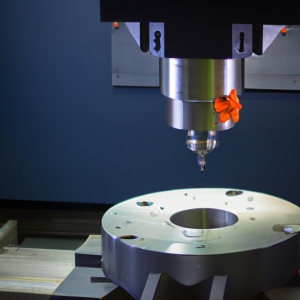In the competitive landscape of CNC machining, optimizing the performance and efficiency of CNC vertical lathes is crucial for manufacturers aiming to deliver high-quality products. Weish CNC, a leading CNC Machine manufacturer, leverages advanced simulation techniques to enhance the capabilities and output of their CNC vertical lathe. This article explores the various simulation methods employed by Weish CNC and their impact on machining performance.
The Importance of Simulation in CNC Machining
Simulation techniques play a pivotal role in CNC machining by providing a virtual environment to test and refine machine operations. These techniques help identify potential issues, optimize machining parameters, and improve overall efficiency, leading to superior product quality and reduced production costs.

Key Simulation Techniques Used by Weish CNC
- Finite Element Analysis (FEA): FEA is used to simulate and analyze the structural behavior of CNC vertical lathes under various operating conditions. By assessing stress distribution, deformation, and thermal effects, Weish CNC can enhance the design and durability of their machines.
- Virtual Machining: This technique involves creating a digital twin of the CNC vertical lathe to simulate the entire machining process. It allows for the optimization of cutting paths, tool selection, and machining parameters, ensuring optimal performance and precision.
- Dynamic Simulation: Dynamic simulation helps in understanding the kinematics and dynamics of CNC vertical lathes. Weish CNC uses this method to evaluate the machine’s movement, vibration, and stability, leading to improved accuracy and smoother operations.
- Thermal Simulation: Heat generation during machining can impact the accuracy and lifespan of CNC machines. Thermal simulation helps in predicting temperature distribution and managing thermal effects, ensuring consistent performance and extending machine life. Benefits of Simulation Techniques
- Enhanced Design: Simulation techniques enable Weish CNC to refine the design of their CNC vertical lathes, ensuring they meet the highest standards of performance and reliability.
- Cost Performance: By identifying and addressing potential issues in the virtual stage, Weish CNC can reduce the need for costly physical prototypes and minimize production downtime, resulting in better cost performance.
- Increased Efficiency: Optimizing machining parameters through simulation leads to faster production cycles and improved material utilization, enhancing overall manufacturing efficiency.
- Improved Product Quality: Simulation allows for precise control over the machining process, resulting in parts with superior finish and accuracy. The Weish CNC Advantage
As a reputable CNC machine manufacturer, Weish CNC integrates advanced simulation techniques into their manufacturing process, providing several key advantages:
- Innovation and R&D: Weish CNC’s commitment to innovation and continuous R&D ensures that their machines are at the forefront of technology, offering cutting-edge solutions to their customers.
- Comprehensive Support: From initial design and development to final production and after-sales support, Weish CNC provides comprehensive services to meet the diverse needs of their clients.
- Global Reach: As a leading Chinese manufacturer, Weish CNC caters to a global market, offering high-quality CNC vertical lathes that meet international standards and requirements. Conclusion
Simulation techniques are integral to optimizing the performance of CNC vertical lathes, enabling manufacturers to achieve superior efficiency, precision, and product quality. Weish CNC, a leading CNC machine manufacturer, leverages these advanced methods to enhance their machines’ capabilities and provide exceptional value to their customers. By investing in state-of-the-art simulation technologies, Weish CNC continues to set new benchmarks in the CNC machining industry.





